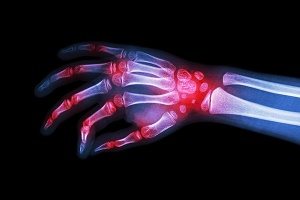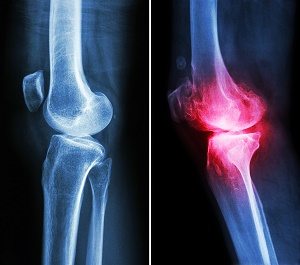 Chronic knee, back or joint pain can be debilitating. Not only does it make everyday activities significantly more difficult, but the treatments to manage the pain can be fraught with side effects that further diminish the quality of life for chronic pain sufferers. In addition to the potential for nasty side effects, pain sufferers who must rely on opioids also face the risk of addiction to the substance. Cutting-edge technology in the form of regenerative medicine and stem cell therapies is helping chronic pain sufferers reduce their reliance on pain medications while avoiding the dangers and recovery time associated with surgery.
Chronic knee, back or joint pain can be debilitating. Not only does it make everyday activities significantly more difficult, but the treatments to manage the pain can be fraught with side effects that further diminish the quality of life for chronic pain sufferers. In addition to the potential for nasty side effects, pain sufferers who must rely on opioids also face the risk of addiction to the substance. Cutting-edge technology in the form of regenerative medicine and stem cell therapies is helping chronic pain sufferers reduce their reliance on pain medications while avoiding the dangers and recovery time associated with surgery.
The basics of regenerative medicine for chronic pain
Regenerative medicine not only sounds like something from the future, but the actual results of the practice already being achieved today are mind-blowing. Not only are people with various musculoskeletal and inflammatory disorders or injuries finding cures for their pain and regaining full function of their joints, but the treatments involved in regenerative medicine are incredibly safe, fast and effective. The first questions many people have about regenerative medicine and stem cells often revolve around the methods used to harvest stem cells for use in the therapies. While we will not get into too much detail about that in this blog post, you can rest assured that the stem cells used at our offices come from safe, non-embryonic sources. You can read more about stem cells and common misconceptions in another recent blog post. The basis for most regenerative medicine is currently stem cells. Stem cells are unique because of their versatility—they are undifferentiated or unspecified, which means that under the right conditions, they can grow into new soft tissues like cartilage, ligaments, tendons or muscle tissues. This is great news for people who suffer from a multitude of conditions like old fractures/breaks/injuries, rheumatoid arthritis, bursitis, osteoarthritis and: Hand- neuroma/other nerve pain

- tendinitis
- carpal tunnel syndrome
- tennis elbow (lateral epicondylitis)
- golfer’s elbow (medial epicondylitis)
- bicipital tendinitis
- acromioclavicular joint injury
- rotator cuff injury
- fibromyalgia
- chronic myofascial pain syndromes
- pinched nerves
- whiplash (cervical myofascial syndrome)
- old muscular/soft tissue injuries (chronic wound pain, burn pain, etc.)
- tendinitis
- heel spur (plantar fasciitis)
- neuroma/other nerve pain
- pain/inflammation of ball of the foot

- Achilles tendinitis
- carpal tunnel syndrome
- patellar tendinitis
- knee pain from an unresolved ligament injury
- shin splints (Osgood-Schlatter disease)
- tendonitis
- knee pain from unresolved ligament injury
- trochanteric bursitis






Leave a Reply